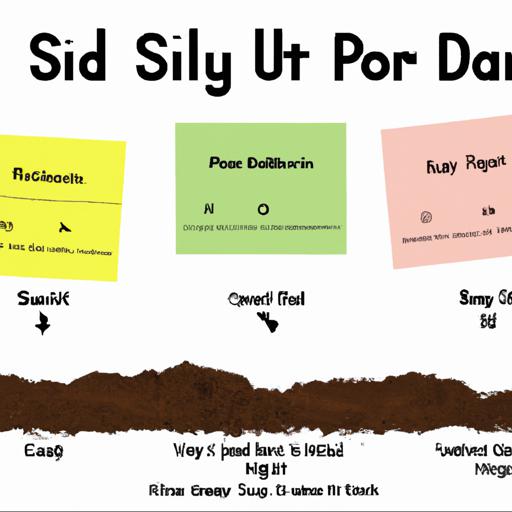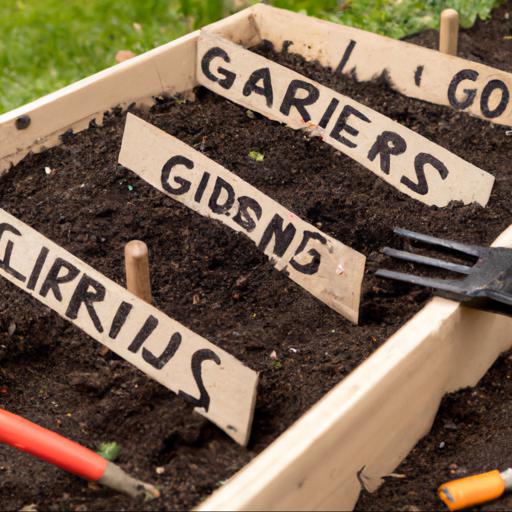Gardening is a great hobby and a great way to get out and enjoy nature. If you’re a beginner, it can be daunting to know where to start. Knowing your plot is an important first step.
From the size and shape, to the type of soil and the amount of sunlight it receives, understanding your plot will help you decide what plants to grow and how to care for them. With the right knowledge and a little bit of planning, you can create a beautiful and productive garden that you can enjoy for years to come.
Understanding your plot: soil type, sunlight, and water requirements

Gardening for beginners, a topic that has posed questions to many aspiring green thumbs. The most important place to start is understanding your plot; namely, soil type, sunlight and water requirements.
It is essential to determine the type of soil when gardening. Without proper knowledge, gardening mistakes can often be made. Heavy clay soils can result in poor drainage and poor aeration, causing stagnant water and inhibit the growth of roots.
But soil type can vary in different parts of the garden; it is important to take soil samples from different points to get an accurate reading. The local council can provide soil sample kits and laboratories can analyse the PH and nutrient status of the soil.
Knowing the texture and texture type of the soil is also key to understanding what fertilizer should be used to promote growth and what type of plants will thrive in your environment. The next essential step for a successful garden is finding the ideal amount of sunlight for your plot. Too little sunlight will produce pale and leggy plants, or hidden growth in part-shaded areas, whilst too much light can damage foliage and stunt growth.
Take note of the sunlight your plot receives throughout the day, whether it’s a full-sunny south facing garden or a part-shaded corner that may only get sun for a few hours in the day. Any good garden is designed to deliver the right amount of sunlight depending on the type of plants used.
Finally, the right amount of water is key to keeping happy and healthy plants. Every type of plant will require different levels of water, some more than others; however, it’s important to understand when exactly to water and how much. A good way to water efficiently is by using a drip irrigation system, rather than sprinklers or hoses, as this reduces water wastage.
Understanding the soil type, sunlight requirements, and water needs of your plot is essential when Gardening for beginners. Armed with this knowledge and the right tools, aspiring gardeners can be sure to produce vibrant and beautiful gardens.
Choosing the right plants for your plot

Gardening for beginners can often seem daunting and difficult. With so many plants, tools and techniques to consider, how do you choose the right ones for your plot? Firstly, it’s important to understand your plot.
What type of soil do you have? Is it acidic, alkaline, sandy, loamy, etc.
? Knowing the soil type not only affects the kinds of plants you can grow, but also how you care for the soil itself. Secondly, take into account the amount of sunlight your plot receives – some plants require more than others.
Lastly, decide on a budget for both planting and factoring in plants or seeds and budget for any extra tools or materials you may need, such as a wheelbarrow or a shute for large plants. Once you’ve assessed your plot and know the type of environment you’re dealing with, it’s time to pick some plants!
Often times, beginners may select plants that have beautiful flowers, but good luck in making them bloom! Other times, rookies might purchase plants that are difficult to look after in the long run. This happens when people are unaware of the level of difficulty each species requires in order to thrive.
When picking plants, make sure they’re suited to the soil and the environment, and are relative to your gardening abilities and the tools you have. When picking plants for your plot, select species that you can find easily and get advice from more experienced gardeners.
If possible, try to take a look at the native plants of your region to get a better idea of what grows well where you live. Try to keep it simple and low maintenance so you don’t become overwhelmed. Finally, don’t forget to enjoy the process of gardening. It can be both time consuming and rewarding, so choose plants that make you happy when you look at them!
Preparing your plot for planting

Ultimate Gardening for Beginners Guide: Knowing Your PlotBefore you get started with your gardening project, the first step is to understand your plot so that you can identify potential problems and make sure that you choose the correct planting for the area. Understanding your plot will help you successfully plan, design, and execute a successful gardening project. When it comes to gardening, what you don’t know can hurt your garden.
Knowing the characteristics of your plot can help you effectively design and plan ahead to get the most out of any outdoor space. From the condition of the soil to the existing plants and greenery, understanding the existing conditions of your space is key.
When assessing the soil, take note of the texture, moisture, drainage, and overall health. You may even want to consider getting a soil test done to determine nutrient concentrations, pH balance, and any potential contaminants. If the soil is clay or loam, you can expect it to be looser, richer, and hold moisture better.
Sandy soils are lighter and tend to drain more easily but may require more frequent fertilizing. Knowing the makeup of your soil can help you choose plants that will be best suited for your conditions.
It’s also important to take into consideration any existing foliage, such as trees, shrubs, and weeds, when planning your planting. Examining both the existing and desired vegetation is an important step in the process.
Does the area get a lot of shade and sun? What kind of pests or disease could you expect in the area? Are there any water sharing issues with nearby foliage?
These are all important things to consider. Understanding your plot is the first and most important step to begin a successful gardening project. Knowing facts like soil and moisture analysis, sunlight exposure, existing vegetation, and potential problems can help you ensure a successful outcome for your garden. Whether you are a novice or an expert, take the time to get to know your landscape and reap the rewards of a beautiful and thriving garden.
Caring for your garden: watering, weeding, and fertilizing
When contemplating tending your garden, gardening for beginners can feel overwhelming. Whether you’re a seasoned gardener or just starting out, every planted plot has its own set of needs.
Knowing your own plot is essential to maximizing its potential. Here are a few key tips to help gardening for beginners get up to speed on the basics — water, weed, and fertilize. A key component for a thriving garden is ample water—too little, and your plants won’t grow; too much and your plants will rot.
Generally, 1” – 2’ of water a week is sufficient, although this can depend on your local climate and the soil type. To test if your garden has received enough water, a simple rule of thumb gardeners use is known as the “finger test” — insert your pointer finger into the soil up to the second knuckle, then pull out and observe the soil moisture.
If the soil adheres to your finger, you’re good to go — you don’t need to water. Then, there’s the pesky matter of weeding. As a gardener, it’s important to know your weeds and to act quickly when you see them encroaching on your precious plants.
A hoe can be a great tool for weeding, but be careful not to get too zealous, otherwise you could harm the roots of your plants. Fertilizing can be tricky for a beginner, but it’s essential for keeping a healthy garden. Choose a fertilizer that’s tailored to your soil type and the plants in your garden.
Be mindful of the frequency you’re fertilizing. For adequate absorption, ensure you’re fertilizing at the start of a period of growth and not during a dry entry to the dormant season.
Whether you’re a seasoned gardener or just starting out, knowing your plot is essential for giving your vegetation the best chance for success. A healthy garden requires regular care and attention. Fortunately, with a few pointers, gardening for beginners can quickly become experts on the basics of nurturing their plot — water, weed, and fertilize.
Our video recommendation
Conclusion
Gardening for beginners doesn’t have to be intimidating. Knowing your plot and understanding the basics of soil, sun, water, and nutrients can help you create a beautiful garden. With the right tools and knowledge, anyone can become an expert gardener.
So, take the time to get to know your plot and start your gardening journey today!
FAQ
What are the essential tools needed for gardening?
Essential tools for gardening include a shovel, spade, rake, hoe, pruning shears, trowel, and watering can.
What are the best plants to start with for a beginner gardener?
Some of the best plants to start with for a beginner gardener are herbs, succulents, tomatoes, peppers, and squash.
What are the best methods for preparing the soil for planting?
The best methods for preparing the soil for planting include tilling, adding organic matter, testing the pH level, and amending the soil with nutrients.
What are the best ways to protect plants from pests and diseases?
The best ways to protect plants from pests and diseases include using natural pest control methods such as companion planting, using physical barriers like row covers, and applying organic pesticides. Additionally, practicing good garden hygiene, such as removing diseased plants and debris, can help prevent the spread of pests and diseases.
What are the best tips for watering and fertilizing plants?
The best tips for watering and fertilizing plants are to water deeply and infrequently, and to fertilize according to the specific needs of the plant. Water deeply so that the water reaches the roots of the plant, and water infrequently so that the soil has time to dry out between waterings. When fertilizing, use a fertilizer that is specifically formulated for the type of plant you are growing. Additionally, use the fertilizer at the recommended rate and frequency for the best results.
What are the best techniques for harvesting and storing produce?
The best techniques for harvesting and storing produce depend on the type of produce. Generally, produce should be harvested at the peak of ripeness and stored in a cool, dark, and dry place. For fruits and vegetables, it is best to store them in airtight containers or bags, while herbs should be stored in a damp paper towel.

